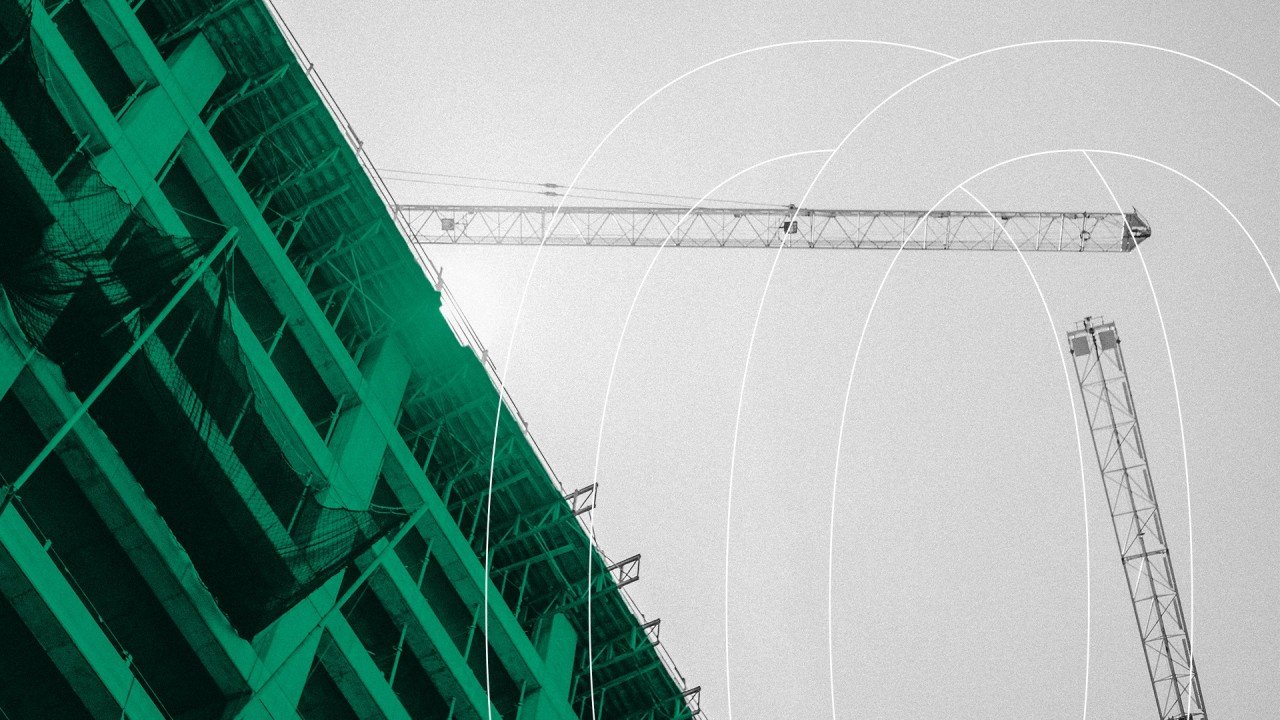Dispatches in Decarbonization: Why the Construction Sector is Key to a More Sustainable Tomorrow
This article first appeared in Mahesh Ramanujam’s monthly LinkedIn newsletter, Dispatches in Decarbonization, on June 26, 2025. Subscribe on LinkedIn to receive these updates.
The construction sector has an important role to play in one of the greatest challenges and opportunities of our time: the Paris Agreement's goal of achieving net zero by 2050. Embodied emissions account for 11% of global emissions and this number is only expected to increase as buildings become more energy efficient and their operational footprints decrease. Embodied emissions refer to GHG emissions associated with the full life cycle of a building, which includes emissions from manufacturing, transportation, construction and the eventual demolition of the building.
The urgency of addressing emissions generated by the construction industry is undeniable. It has been said the planet will add floor space at the scale of New York City every month until 2060. According to McKinsey, reaching net zero by 2050 will require the buildings and construction industry to decarbonize three times faster over the next 30 years versus the previous 30.
The stakes are clear, but so is the opportunity. By reimagining how we design and construct our built environment, the construction sector can lead the way toward a zero emissions future. Initiatives like my home country of India’s Viksit Bharat 2047 vision are good reminders of what’s possible.
Viksit Bharat: A Case Study in Scale and Urgency
Already the world’s fourth largest economy, India has an ambitious plan to become a developed nation by its 100th year of independence in 2047. Becoming a developed nation will require a massive increase in urbanization – from around 30% where it stands now to upwards of 50%. Viksit Bharat calls for an enormous investment in India’s urban future, with an estimated $32 trillion in investment over the next 22 years. This will come with massive infrastructure development — including constructing new buildings to accommodate an increased population and its associated economic activity.
And we know this is where the construction sector plays a crucial role. To meet both Viksit Bharat’s goal and India’s 2070 national net zero goal, India’s construction sector must continue to evolve and embrace net zero construction. The construction sector’s contribution is also critical for creating jobs — the net zero job pipeline that will power the future of the industry — and drive economic growth which are necessary for India to become a developed nation.
Think for a moment about the size and scale of this opportunity for this one country alone and the construction sector that stands to greatly benefit from it. This is not unique to India. Across the Global South — from Africa to Southeast Asia — development will be rapid and massive. The question is whether we will build for the past or for the future. And will we lock in design and construction efficiencies or inefficiencies for the next 40+ years?
The Real Barriers: Cost, Risk, and Investment
Are there challenges? Yes, of course. And it won’t surprise you that most are tied to money and risk.
Addressing the high costs associated with transitioning to a sustainable economy can be overcome through a combination of efforts including subsidies, low-interest loans, public-private partnerships, and green bonds. By providing subsidies and low-interest financing options, we can make renewable energy projects and other green initiatives more affordable for businesses and consumers. Public-private partnerships play a vital role in pooling resources and expertise from both sectors to drive large-scale sustainable projects.
To mitigate investment risk, government guarantees can be a powerful tool. These guarantees reduce the financial risks for investors, making it more attractive to fund sustainable projects.
Finally, shifting the focus from short-term gains to long-term investment is essential for sustainable growth. Encouraging long-term investment strategies aligns with the goal of sustainability, as many environmental projects require significant time to realize their full benefits.
I believe the prescription for a net zero construction world is making net zero building certification incremental, accessible, and affordable and making sure the financing incentives I just mentioned are available to companies that can’t manage the investment on their own.
A Practical Framework for Progress
So, how do we get there? The construction sector can take meaningful action by pursuing the following steps:
Set clear targets for transitioning buildings or portfolios to net zero — ideally aligned with the Paris Agreement’s 2030 goals. Be bold. And before setting targets, conduct a rigorous emissions assessment backed by science — at GNFZ we use the GHG Protocol in our certification — so that you can set informed targets.
Develop a comprehensive plan that is both manageable and realistic. Setting and achieving incremental goals that can be celebrated is deeply motivating and demonstrates progress.
Invest in innovation. Focus on developing and adopting new climate technologies — including investing in research and development and scaling up deployment of existing technologies.
Focus on enhancing energy efficiency in building operations. Areas to focus on include building envelope, HVAC systems, lighting, water efficiency, landscape, pumps and motors, plug loads, waste management, renewable energy supplementation, and whole building operations.
Engage stakeholders and meet people where they are. Collaborating with employees, suppliers, and the community ensures broad support and participation in net zero initiatives.
Monitor and report progress to reach net zero. Demonstrate continuous improvement.
Leverage public-private partnerships. Sharing knowledge, resources, and technologies helps accelerate the transition to net zero. I have been saying for years that “partnership is the new leadership” and that mantra resoundingly applies in the transition to net zero as well.
Educate the community. This includes public awareness campaigns, partnerships with local organizations, incentive programs, youth engagement, and making sure feedback mechanisms are meaningful and easily accessible.
Meaningfully move to emissions mitigation — across Scope 1, 2 and 3 emissions.
GNFZ’s Role in Net Zero Construction
At the Global Network for Zero (GNFZ), we’re building a new model for net zero certification that is transparent, incremental, and rooted in data and outcomes. We’re here to help organizations of all sizes access the tools, training, and recognition they need to transition to net zero — wherever they are on their journey. Our Net Zero Construction certification helps construction projects mitigate their emissions across any or all of the following categories: Energy, Water, Waste and Emissions. And it accounts for embodied emissions, assessing emissions due to building materials and processes, estimated from the actual Bill of Materials at the end of construction, as well as emissions due to electricity/fuel etc. consumed exclusively for the purpose of construction.
If you are working in the construction industry and want to learn how you can take advantage of this in your own projects, reach out to us here. We’d love to support your journey.
The Best Way to Predict the Future is to Create it
One of the most important things we can do as a community is to stay hyper-focused on the existential goals in front of us. This is especially true today even as we deal with geographic and political challenges and uncertain economies.
I can tell you this with confidence: The choices you make as a leader in this industry will be cemented in place with consequences — either positive or negative — long after the current challenges facing us pass. They will define whether we succeed or fall short.
I believe deeply in our shared capacity to meet this moment. One of my favorite Peter Drucker quotes is “The best way to predict the future is to create it.” I believe that this is our moment to demonstrate to the world how it is done.
Let’s build that future — together.




